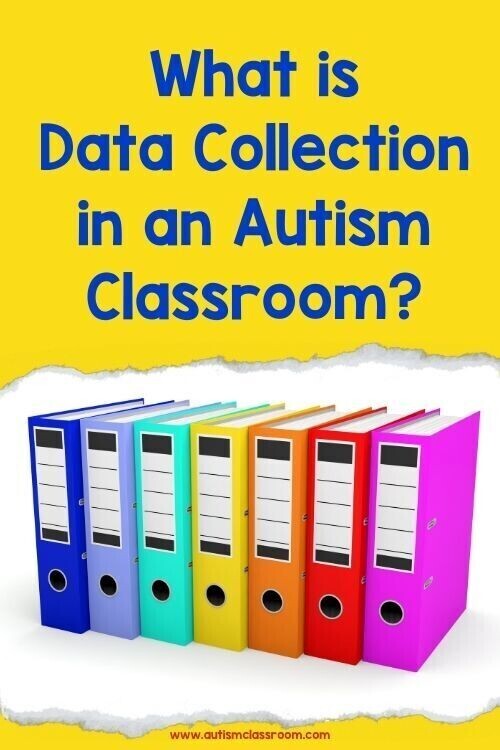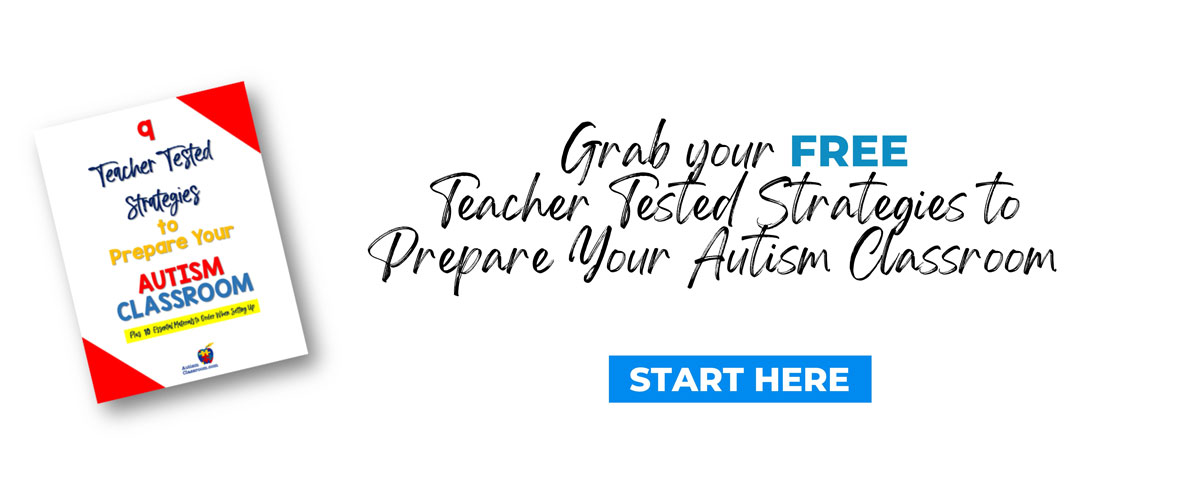Want to help your students with autism reach their individual objectives even faster? Organized data collection is what you need. You can start creating this system by assigning each student a data binder with data tracking sheets inside. For me, this took some time to get right. I tried some data collection tools that were handed down to me, but I could not quite understand them.
Then I realized whatever tool I used, it needed to be blue-water-in-the-tropics clear to me since I was the one interpreting the data sheets.
Grab your pen and your binder and let’s take a look at how you can best use data sheets to measure data with in your data collection system.

Different Types of Data Sheets
Data sheets are there to help you record any kind of data. As you already know, not all data sheets are alike. Depending on what type of data you’re aiming to track, you can find the data sheets that best fit your special education classroom needs. For instance, if you want to keep tabs on how often a student exhibits aggressive behaviors, you can use a data sheet that allows you to create tally marks.
What if you want to record a student's progress on matching, identifying, imitating, or labeling? You’ll want to find a data sheet that can let you label individual items and record a student’s answer for each trial.
One of the most useful data sheets you can use for progress monitoring is called a permanent product data sheet. This type of data sheet doesn’t separate the student’s work from your monitoring. Instead, any work they produce is directly on the sheet itself, which can make evaluating your data a whole lot easier. It comes especially handy when you want to improve writing, tracing, and coloring skills. For example, if you want your student to color in three circles only out of the four, you could easily draw those four circles and have them work directly on the sheet. When they complete the activity, you can then mark in what you observe right on the page.
Another great data sheet for progress monitoring is called a task analysis data sheet. This sheet helps you break down tasks into their sub steps and track progress at each step of the way. For example, hand washing is one task itself that includes plenty of mini steps a student can follow. If your objective is to get a student to wash their hands independently, you can record what you observe on a data sheet when they pump soap, wash their hands, dry their hands, and everything in between.
What to Consider When Creating Data Systems
- Create categories of tasks and the objective you want your students to achieve
- Brainstorm related activities to include in your daily schedule (Morning routines, reading and math centers, cognitive tasks, 1:1 work, mealtimes, group activities, etc.)
- Find the right data sheets to record your observations
- Maintain continual data collection for the best progress monitoring
- Adjust your lessons and objectives based on results
From these few examples alone, you can see how powerful data collection can be in allowing you to track something meaningful. From there, you have an easy and convenient resource to interpret your data and provide an in-depth report to the parents. Your data sheets can also serve as tools to help you prepare your next lessons ahead since you will be able to see what is working and what is not working with each student.
If you have taken my Step by Step Autism Classroom Design Course, you know that one of the bonus modules is on data collection in the special education classroom.
If you have not taken the course and would like more information about topics like this or want some tips about setting up an autism classroom, just click here to sign up for the Autism Classroom mailing list.


